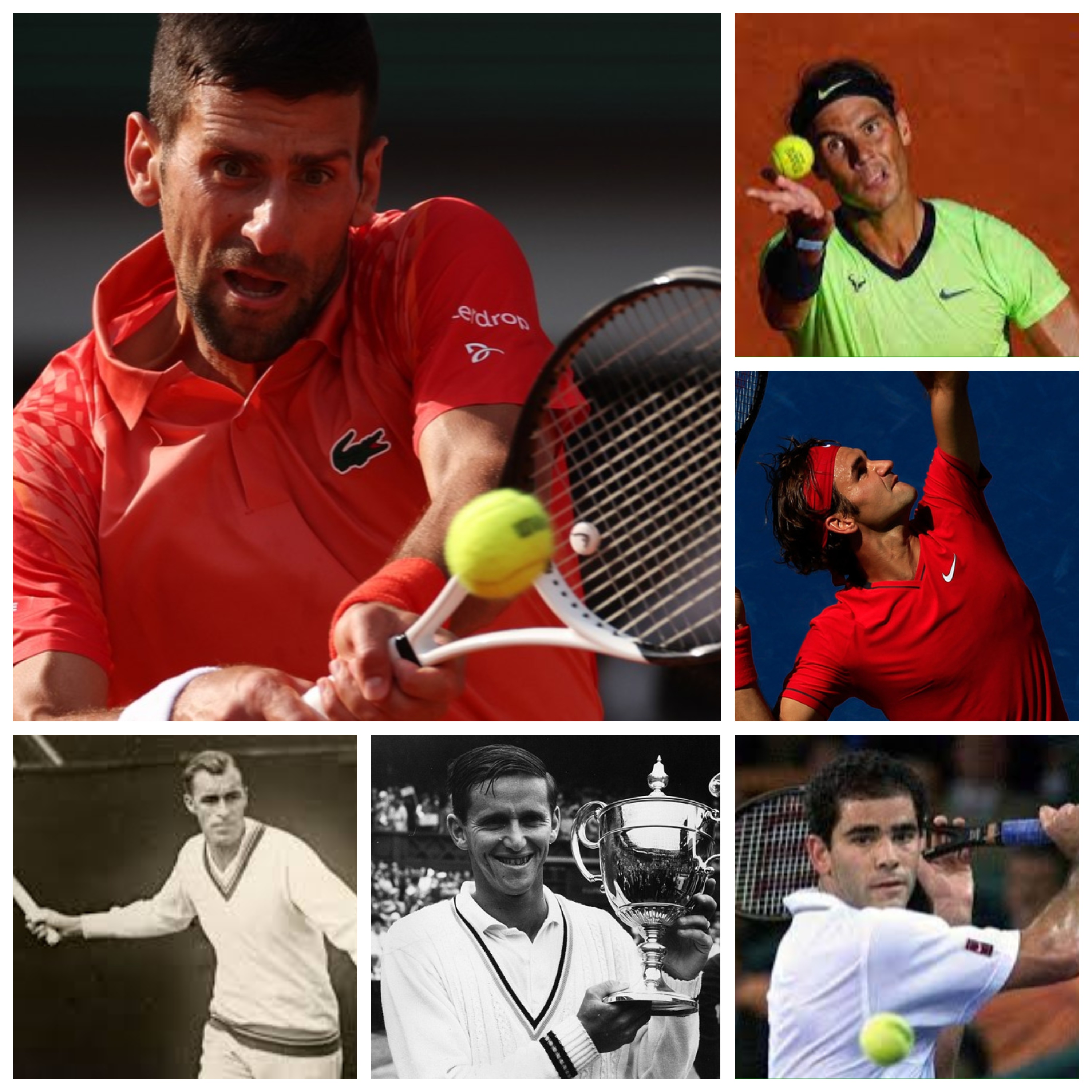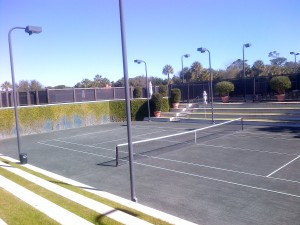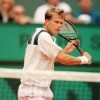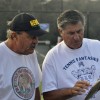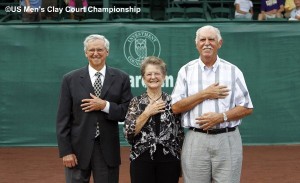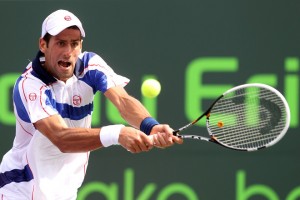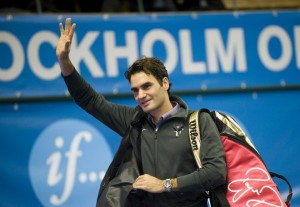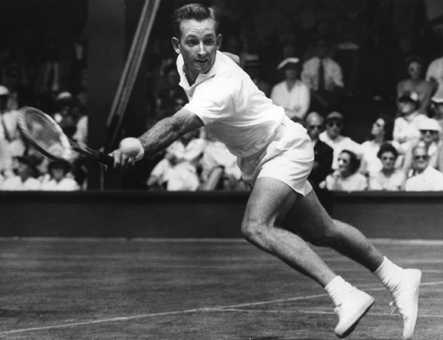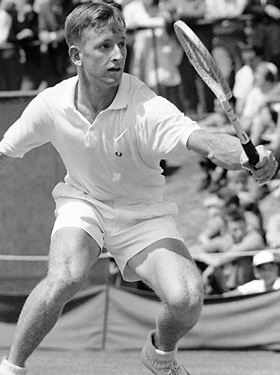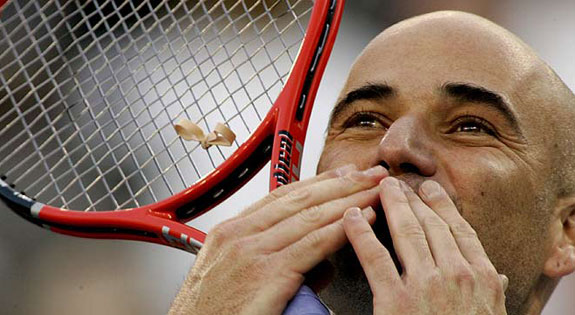By Randy Walker
@TennisPublisher
In lieu of Novak Djokovic winning his record-breaking 23rd major singles title at Roland Garros in 2023, it is interesting to look back through the years to see how this record changed hands, whether the players actually knew it or not!
For almost 40 years, Bill Tilden “held” the record for the most major singles titles won with 10. The only issue with this record is that nobody really kept track and followed these type of records and it was not written about in the media. Tilden won his 10th and final “major” singles title at Wimbledon in 1930. In those days, Davis Cup was held in higher regard than any other tournament and the majors and the Grand Slam were just at the beginning of their evolution. It wasn’t until Jack Crawford won the Australian, French and Wimbledon Championships in 1933 that the concept of the Grand Slam and majors started to become part of the tennis vernacular. After Crawford fell on the last step of his “Grand Slam” journey in the final of the U.S. Championships, it was Don Budge who was the first to sweep all four of the major events in the same year. The history of the term “Grand Slam” and its beginnings is discussed here: https://www.youtube.com/watch?v=6L7CrpyVpLE&t=30s
In the 1960s, after Rod Laver joined fellow greats Ken Rosewall, Lew Hoad, Pancho Gonzales and others in the forbidden “pro” tour (read more about it in the book “The Pros: The Forgotten Era of Tennis” here: https://www.amazon.com/Pros-Forgotten-Era-Tennis/dp/1937559912/ref=sr_1_1?keywords=the+pros+the+forgotten+era+of+tennis&qid=1686661518&sprefix=the+Pros+Forgotten+%2Caps%2C116&sr=8-1 it was Roy Emerson who cleaned up the then “amateur only” major championships. Although he won his first two major titles beating Laver in the final of the 1961 Australian and U.S. Championships, he lost three of the four major finals to Laver during Laver’s 1962 Grand Slam run (Australia, France and U.S.) He then won all 10 of his major finals that followed. He won his 10th at the 1966 Australian Championships over Arthur Ashe in a four-set final. This victory tied Emerson with Tilden in the all-time lead, although not mentioned in the media. Emerson won his “record-breaking” 11th major 364 days later again at the Australian Championships and again against Ashe, winning much more comfortably by a 6-4, 6-1, 6-1 margin in the final. It was history being made, although not known or reported. Emerson went on to win one more major title at the French Championships later that year to give him a final total of 12 singles majors.
When the “Open Era” of tennis began at the 1968 French Championships – and professionals were allowed to play in the major tournaments – Laver quickly “threatened” the Emerson record by winning his 11th career major at the 1969 U.S. Open to complete his Grand Slam. Strangely, Laver never won another major after his dominant Grand Slam sweep in 1969 which ended when he had just turned 31 years old. Had there been more publicity and hype about Laver breaking the Emerson number of majors, would Laver had put more effort into winning more majors? He never played the French again after his 1969 triumph and only played the Australian Open one more time in 1971, losing in the round of 16.
Even into the 1970s, the Grand Slam tournament title count was not part of the conversation in tennis. In the 1970s, the Australian Open had fallen into such ill-favor that it did not even award Grand Slam level ranking points and Bjorn Borg and Jimmy Connors barely played there. There was talk, however, that if Bjorn Borg would win the U.S. Open in 1978, 1979 or 1980 – when he had already won the French and Wimbledon titles – that he would for sure go to the Australian Open, then held in November/December, to try and complete the Grand Slam. However, there was very little if any talk about Borg trying to break the Roy Emerson record of 12 majors after the Sweden won his 11th major (tying Laver in second place) at the 1981 French Open. Would Borg have played a little longer had the quest to break Emerson’s record of 12 major singles title been more part of the conversation in tennis?
It wasn’t until the 1990s when tennis stats and public relations became more professional, with the start of the ATP Tour, when more sophisticated records and stats were created and kept. This was at the same time that Pete Sampras began to pile up the major tournament victories. When Sampras won Wimbledon in 1995 it marked his sixth career singles major and Sally Jenkins in Sports Illustrated reported that he was halfway to the Emerson record.
“I didn’t even know I held the singles record until it came out in the press that Pete was chasing me,” said Emerson years ago of his record. “We didn’t pay any attention to records.”
Sampras would tie Emerson with his 12th major at Wimbledon in 1999 and he would break the record in dramatic fashion at Wimbledon in 2000, as documented in the “On This Day In Tennis History” compilation here:
July 9
2000 – Pete Sampras beats Australia’s Pat Rafter 6-7 (10), 7-6 (5), 6-4, 6-2 to win his record-breaking 13th major singles title, breaking away from Roy Emerson as the all-time leader in men’s singles major championships. Sampras clinches his seventh Wimbledon singles title in fading sunlight after a numerous rain delays threaten to extend the final to an extra day and while suffering from pain in his left shin that require him to get pain-killing shots before matches and preventing him from proper practice or warm-ups. Writes Steve Flink in the book Pete Sampras: Greatness Revisited book, “As he approached the net to shake hands with Rafter, Sampras was overcome by emotions. He crouched over and the tears would not be denied. He had his record breaking 13th major. He had the gratification of knowing that he had won this tournament despite having to move past his pain at the end of every match from the third round on. He had the pleasure of knowing that for the first time in his career his parents had been there in the stands to witness one of his major triumphs.”
Sampras would add one more major to the tally with his walk-off win at the 2002 U.S. Open and many thought his record of 14 majors would stand for a while. However, right on his heels was Roger Federer who dominated the sport even greater than Sampras did. Federer won three majors in his 2004, 2006 and 2007 seasons and by the time 2009 began, Federer was just one behind Sampras with 13 career majors.
After losing a devastating five-set final to Rafael Nadal at the 2009 Australian Open, Federer openly cried on court during the trophy ceremony after failing to equal the Sampras record, only to be comforted by Nadal and Laver, as documented in the “On This Day In Roger Federer” book here:
February 1
2009: Roger Federer is reduced to tears of disappointment after losing to Rafael Nadal 7-5, 3-6, 7-6(3), 3-6, 6-2 in four hours, 22 minutes in the final of the Australian Open. Nadal’s win over Federer – his 13th win in the last 19 matches between the two tennis titans – prevents Federer from equaling the Pete Sampras record of 14 Grand Slam tournament titles. In the on-court trophy ceremony, Federer tries to speak of the match, but tears well up in his eyes and he says “Maybe I’ll try later. God, it’s killing me,” before bursting in full sobs of disappointment. After being presented the champions trophy by Australian tennis legend Rod Laver, Nadal then hugs and consoles Federer and says to him, “Roger, sorry for today. I really know how you feel right now. Remember, you’re a great champion. You’re one of the best in history. You’re going to improve on the 14 of Sampras.”
At the next major at the French Open, Federer was able break through and not only complete a career Grand Slam, but tie the Sampras record with his 14th career major, as documented in the “On This Day In Roger Federer” book here:
June 7
2009: Roger Federer finally completes a career Grand Slam defeating Robin Soderling 6-1, 7-6(1), 6-4 in the final of the French Open in Paris. The title is Federer’s 14th major singles title, equaling the record of Pete Sampras. Writes Rene Stauffer in the book Roger Federer: Quest for Perfection, “Even before he won the last point he had tears in his eyes. He finally won the title that many thought he never would, and only a few weeks after a drastic low and a phase where most people already wrote him off. Federer became the sixth man after Fred Perry, Don Budge, Roy Emerson, Rod Laver and Andre Agassi to accomplish the career Grand Slam, to complete the quartet of major titles within the scope of a career.” This might just be the greatest victory of my career. I’m so proud,” Federer says after receiving the Coupe des Mousquetaires from Andre Agassi, who also clinched the career Grand Slam at the French Open 10 years earlier. “It really wasn’t easy to deal with my emotions during the match.” Writes Mark Hodgkinson of the Daily Telegraph, “Federer’s defeat of Robin Soderling gave him a first French Open title, made him only the sixth man to achieve the career grand slam, put him level with Pete Sampras on a record 14 majors, and surely brought confirmation that he is the greatest tennis player of all time.”
Then, in dramatic fashion at the Wimbledon final weeks later, Federer was able to break the record, with Sampras in attendance, as documented from the “On This Day In Roger Federer History” book here:
July 5
2009: Roger Federer breaks the all-time record for most major men’s singles titles winning his 15th major title with a dramatic 5-7, 7-6(6), 7-6(5), 3-6, 16-14 win over Andy Roddick in the Wimbledon final. The match lasts four hours and 16 minutes, including a 95-minute fifth set, lasting 77 games — marking the longest major final in games in history. The tournament win, Federer’s sixth at Wimbledon, moves him past Pete Sampras, who won 14 majors from 1990 to 2002. Sampras flies to Britain from his home in California to watch the final and sits in the Royal Box along with other tennis legends Bjorn Borg and Rod Laver. “I am happy that I was able the break the Grand Slam record. Wimbledon is the tournament that always meant the most to me,” says Federer. Roddick, who loses to Federer in the 2004 and 2005 Wimbledon finals, nearly goes up two-sets-to-love in the match, leading by a set and 5-1 in the second-set tie-breaker and holds four set points in the tie-breaker, losing a critical one at 6-5 with a botched backhand volley into an open court. Writes Bud Collins in The Bud Collins History of Tennis, “The Yank might have won had he not bungled a set point volley in the tricky breeze that would have given him a two-set lead. Roger lifted himself from 1-5 in that tie-breaker, cancelling four set points, the Roddick-haunting one at 6-5, the misplayed volley. Never has such brutal serving illuminated a major final. They fireballed each other, scorching the court – Federer with 50 aces (a personal high), Roddick with 27 – while they crafted the lengthiest of major finals. Their 77 games topped the 71 consumed by Gerald Patterson in overcoming Jack Hawkes to seize the Australian trophy 82 years before. It was also a Wimbledon record, surpassing Nadal and Federer’s 62 games, merely 12 months previously.” Writes Rene Stauffer in the book Roger Federer: Quest for Perfection, “His triumph was complete. He reached his dreams. He set new standards in his sport and his career was closer to perfection than ever before. While debating if he is the best player on earth, he provided overwhelming proof and most people gave him the nod as the greatest ever,”
Sampras held the all-time major record for almost exactly nine years – from 2000 Wimbledon to 2009 Wimbledon – a span of 35 majors. Federer held (or shared) the all-time record for men’s majors from 2009 Wimbledon to the 2022 Australian Open – a span of 48 majors and about 12 and half years. He was able to add on five more majors to get to 20 in all after his win at the 2018 Australian Open.
It wasn’t until the 2022 Australian Open when Rafael Nadal finally caught up to Federer and won his 21st major with a dramatic win from two sets to love down against Daniil Medvedev, winning 2-6, 6-7, 6-4, 6-4, 7-5 in five hours and 24 minutes, as written about here: https://www.worldtennismagazine.com/archives/20596
Nadal tacked on his 22nd major months later at Roland Garros and was eventually caught by Djokovic when the Serbian won the Australian Open in 2023, after not being allowed to play at the 2022 Australian and U.S. Opens due to his non-vaccination status against COVID. Nadal’s reign as the all-time leading men’s major title winner lasted about one year and four months and only four majors.
Will there be another chapter of the changing of the guard in the history of the all-time men’s major championship record tally? It’s hard to see it happening in this lifetime.
